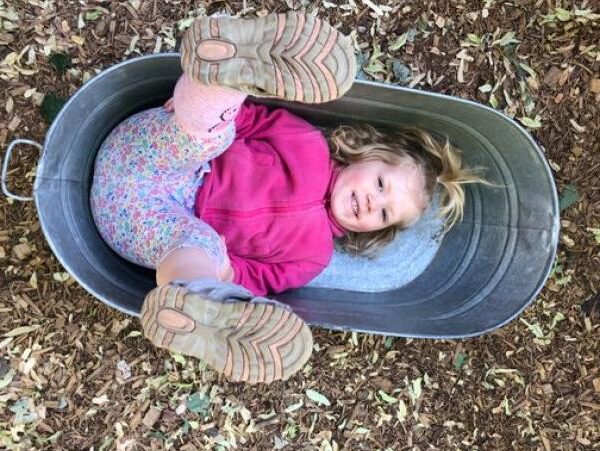How outdoor environments support active play

ACECQA has recently released guidance about the way in which outdoor learning environments support children by providing rich opportunities for exploration, discovery and appreciation of the natural world, enabling them to be active, to strengthen fine and fundamental motor skills, test physical limits, problem solve and get messy.
By creating quality outdoor learning environments, particularly when coupled with quality levels of engagement and interaction between educators and children, early childhood education and care (ECEC) services have the potential to promote children’s motivation, confidence and competence in being physically active.
Such environments help to establish behaviours that promote health, confidence and wellbeing and, in turn, influence children’s learning and development.
Bribie Island Community Kindergarten is one service which understands that environmental factors — such as space, playground design, access to natural environments and availability of appropriate equipment and resources — influence children’s levels of physical activity and opportunities for challenging, active play.
The Excellent rated service is committed to caring for and learning on Country of the Gubbi Gubbi and Joondoburri People. Each week the children are invited to choose whether they would like to experience a bush, beach or combined program to explore and to build their knowledge and cultural connection with local Aboriginal sites.
When programs, environments, and educator practice are designed with intentionality, children are more likely to experience positive outcomes.
The way that environments are designed, equipped and organised determine space and resource use and the level of children’s engagement, social interactions and positive experience.
Children are more likely to enjoy and engage in environments that are flexible, where equipment is open-ended, can function in multiple ways and be part of children’s imagination, and where active play and appropriate risk taking is supported.
With the physical environment directly affecting the quality and quantity of children’s active play, education and care services therefore have an important role in planning innovative spaces and scaffolding experiences.
The design of quality active play environments can creatively use existing space, materials and resources.
Playground Ideas, an Australian non-profit organisation, provides free access to over 150 do-it-yourself playground designs made from local, low cost and recycled materials as well as training and support via ‘how to’ guides. They may inspire action to innovate and also spark thinking about the incorporation of sustainable and environmentally responsible resources in playground design.
To access the ACECQA coverage of this story, please see here.
Popular

Economics
Provider
Quality
Workforce
3 Day Guarantee comes into effect: New CCS rules unlock access for families and children
2026-01-05 06:30:55
by Fiona Alston

Workforce
Events News
Practice
Provider
Quality
Research
Mary MacKillop Announced as Finalist for FIA 2026 Best Transformational Gift Award
2026-01-06 06:30:50
by Fiona Alston

Practice
Provider
Quality
Workforce
SOEL celebrates over 50 years as a family-owned business in WA
2026-01-06 08:00:51
by Contributed Content













